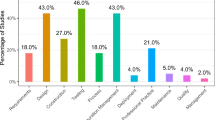Abstract
This paper proposes a new methodology for checking conformance of the software architectural design of Learning Management System (LMS) to Learning Technology System Architecture (LTSA). In our approach, the architectural designing of LMS follows the formal modeling style of Acme. An ontology is built to represent the LTSA rules and the software architecture in Acme style. Conformity of the design with LTSA rules is tested by reasoning the ontology with the query language SPARQL. A Java-based plug-in system is introduced to implement functionalities like loading the elements of the architectural design into the ontology, mapping the architectural elements with LTSA elements, and performing the conformance test. The advantage of the proposed methodology is two-folded. First, it verifies an important software quality attribute – conformance to technical standard – at an early stage of development, like high-level design phase. Secondly, instead of the conventional manual checklist based approach of conformance testing, this methodology focuses on an automated way to finding the conformance level of the system under check.









Similar content being viewed by others
References
Akerman, A., & Tyree, J. (2006). Using ontology to support development of software architectures. IBM Systems Journal, 45(4), 813–825.
Antoniou, G., & Van Harmelen, F. (2004). Web ontology language: OWL. In Handbook on ontologies (pp. 67–92). Heidelberg: Springer.
Bittner, T., Donnelly, M., & Winter, S. (2005). Ontology and semantic interoperability. Large-scale 3D data integration: Challenges and Opportunities, pp.139–160.
Carvalho, N. R. (2013). An ontology toolkit for problem domain concept location in program comprehension. In Proceedings of the 2013 International Conference on Software Engineering. IEEE Press, pp.1415–1418.
Choe, H., & Kim, T. (2005). An enhanced LTSA model providing contextual knowledge for intelligent e-learning systems. Journal of Information Science and Engineering, 21(5), 849–858.
Chua, B. B., & Dyson, L. E. (2004). Applying the ISO 9126 model to the evaluation of an e-learning system. In Proc. of ASCILITE, pp. 5–8.
Dorn, C., & Taylor, R. N. (2013). Coupling software architecture and human architecture for collaboration-aware system adaptation. In Proceedings of the 2013 International Conference on Software Engineering. IEEE Press, pp. 53–62.
Farance, F., & Tonkel, J. (2003). Draft standard for learning technologies. Learning technology systems architecture LTSA. IEEE Technical report. doi:10.1109/IEEESTD.2003.94410.
Garlan, D. (2000). Software architecture: a roadmap. In Proceedings of the Conference on The Future of Software Engineering. ACM, pp. 91–101.
Garlan, D., Cheng, S. W., & Kompanek, A. J. (2002, July). Reconciling the needs of architectural description with object-modeling notations. Science of Computer Programming, 44(1), 23–49.
Garlan, D., Monroe, R., and Wile, D. (2010). Acme: an architecture description interchange language. In CASCON First Decade High Impact Papers. IBM Corp, pp. 159–173.
Gurgel, A., Macia, I., Garcia, A., von Staa, A., Mezini, M., Eichberg, M., & Mitschke, R. (2014). Blending and reusing rules for architectural degradation prevention. In Proceedings of the 13th international conference on Modularity. ACM. pp. 61–72.
Jena, A. (2013). Apache jena. jena. apache. org [Online]. Available: http://jena. apache. org [Accessed: Mar. 20, 2014].
Kim, H. M., & Fox, M. S. (2002). Using enterprise reference models for automated ISO 9000 compliance evaluation. In System Sciences, 2002. HICSS. In Proceedings of the 35th Annual Hawaii International Conference on. IEEE, pp. 1278–1287.
Kumar, P., Samaddar, S. G., Samaddar, A. B., and Misra, A. K. (2010). Extending IEEE LTSA e-Learning framework in secured SOA environment. In Education Technology and Computer (ICETC), 2010 2nd International Conference on (Vol. 2). IEEE, pp. V2–136.
McGuinness, D. L., and Van Harmelen, F. (2004). OWL web ontology language overview. W3C recommendation, 10(10), 2004.
Pahl, C., and Holohan, E. (2004). Ontology technology for the development and deployment of learning technology systems-a survey. In World Conference on Educational Multimedia, Hypermedia and Telecommunications (Vol. 2004, No.1), pp.2077–2084.
Protégé (2000). The Protege Project. http://protege.stanford.edu .
Prud’Hommeaux, E., and Seaborne, A. (2008). SPARQL query language for RDF. W3C recommendation, 15.
Schmerl, B., and Garlan, D. (2004). AcmeStudio: Supporting style-centered architecture development. In Software Engineering, 2004. ICSE 2004. Proceedings. 26th International Conference on. IEEE, pp.704–705.
Sengupta, S., & Dasgupta, R. (2015). Architectural design of a LMS with LTSA-conformance. Education and Informatsion Technologies, pp., 1–26. doi:10.1007/s10639-015-9443-z.
Sowa, J. F. (2010). The role of logic and ontology in language and reasoning. In Theory and applications of ontology: philosophical perspectives (pp. 231–263). Netherlands: Springer.
Sun, J., Wang, H. H., and Hu, T. (2011). Design Software Architecture Models using Ontology. In SEKE 2011, pp.191–196.
Author information
Authors and Affiliations
Corresponding author
Ethics declarations
This study is NOT funded by any organization.
Conflict of interest
They have no conflict of interest.
Rights and permissions
About this article
Cite this article
Sengupta, S., Dasgupta, R. LTSA conformance testing to architectural design of LMS using ontology. Educ Inf Technol 22, 3017–3035 (2017). https://doi.org/10.1007/s10639-016-9569-7
Published:
Issue Date:
DOI: https://doi.org/10.1007/s10639-016-9569-7




